The Hungarian Revolution of 1956 was a significant event in the country’s history. Hungarians commemorate it every year to this day. But one country’s revolution cannot be separated from world history, and without a doubt, the uprising made its mark on world history as well. Freedom fighters took a stand against the Soviet Union and news of this spread abroad as well. Some condemned the system from the start. But others who had been sympathizing with the communist systems from a distance, as a result of the events in Hungary, started to wonder whether this was really the way to go.
At the end of World War II, in 1945, the Red Army expelled the Nazis from Hungarian territory. This, however, did not bring freedom to the country but communist oppression. The people’s desire for their country to be free was present. On October 23, 1956, this need culminated when a nationwide revolution broke out against the Hungarian People’s Republic and Hungarian domestic policies imposed by the Soviet Union.
Related article
Faces of the 1956 Revolution - with Archived Photos!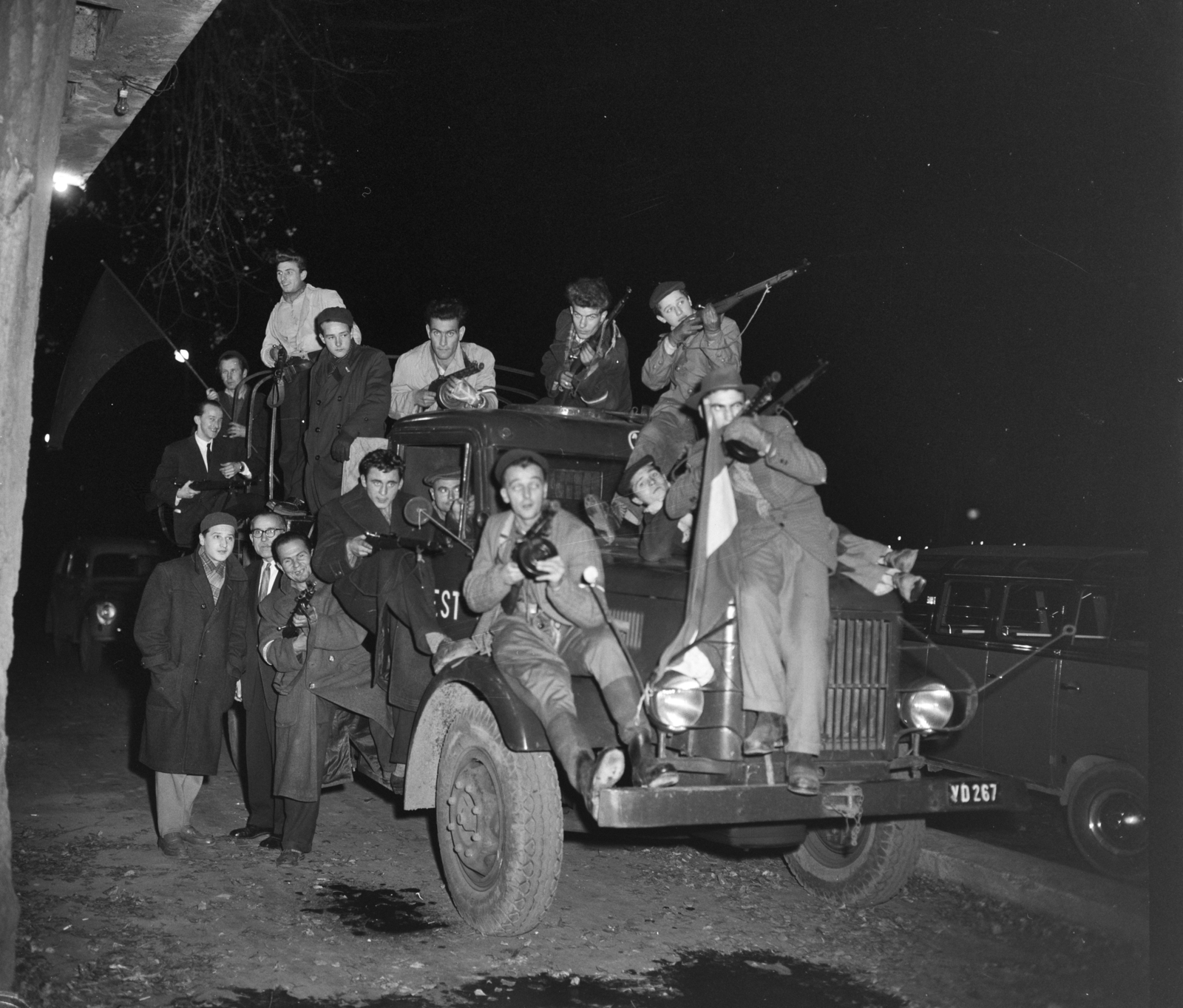
There are a couple of 1956 freedom fighters and groups of fighters who became well-known, either by their acts, their martyr deaths, or by archived photographs appearing in international newspapers or domestic publications. Some were even painted on firewalls of the capital. The Széna square group of freedom fighters and the Pest lads are all […]Continue reading
But why was the Hungarian Revolution of 1956 a turning point? After all, revolutions broke out during the course of (European) history before 1956, such as the uprisings between 1815 and 1848-1849. As Lee Congdon writes in the book 1956: The Hungarian Revolution and War for Independence, “intellectuals could often be found in the rebel vanguard; Lewis Namier went so far as to describe the 1848 rebellions as ‘revolutions of the intellectuals’.”
When the Tsarist government collapsed and Lenin and the Bolsheviks seized power in 1917, it “provided intellectuals with a new and powerful revolutionary myth.” In intellectual circles, they looked “favorably upon Lenin’s achievement” and the “Hungarian revolution was something of an embarrassment,” and this thinking did not change until very recently, Congdon says. Even today, there are some who “continue to sympathize with Lenin and the revolution that he led.”
While there were few who understood the significance of the Hungarian revolution, especially intellectuals of the Left; for those who did, writes Cogdon, it meant “the great historic response to the Bolshevik Revolution.”
Fact
The Hungarian Revolution
began in Budapest when university students appealed to the civil populace to join them at the Hungarian Parliament Building to protest the USSR’s geopolitical domination of Hungary by way of the Stalinist government of Mátyás Rákosi. After a delegation of students entered the building of Hungarian Radio to broadcast their demands for political and economic reforms to the civil society of Hungary, the delegation was detained. When the student protestors outside the Hungarian Radio building demanded the release of their delegation, policemen from the State Protection Authority (Államvédelmi Hatóság, or ÁVH) shot and killed several protestors.
Hungarians organized into revolutionary militias to battle the ÁVH; local communist leaders and ÁVH policemen were captured and summarily killed or lynched; anti-communist political prisoners were released and armed. To realize their political, economic, and social demands, the local soviets (councils of workers) assumed control of the municipal government from the Hungarian Working People’s Party. The new government of Imre Nagy disbanded the ÁVH, declared the Hungarian withdrawal from the Warsaw Pact, and pledged to re-establish free elections. By the end of October, the intense fighting had subsided, but some workers continued battling the Stalinist régime and the appearance of opportunist bourgeois political parties.
Although initially willing to negotiate the Red Army’s withdrawal from the Hungarian People’s Republic, the USSR decided to repress the Hungarian Revolution on November 4, 1956. The Hungarian revolutionaries fought until November 10 (some groups even longer); 2,500 Hungarians and 700 Red Army soldiers were killed, and 200,000 Hungarians became refugees abroad to escape the death penalty or imprisonment.
Albert Camus
The list of “exceptions” of those who changed their minds begins with Albert Camus. The French philosopher, author, and journalist “broke with the pro-Soviet French Left even before the Hungarian revolution erupted.”
He joined the French Communist Party (PCF) in early 1935 to fight inequalities between Europeans and ‘natives’ in Algeria, despite not being Marxist. However, he left it a year later but joined the Algerian Communist Party (PCA) in 1936, when the party was founded. He was expelled from the PCA for refusing to toe the party line. Camus’s mistrust of bureaucracies that aimed for efficiency instead of justice grew, and he had strong anti-fascist feelings, and the rise of fascist regimes in Europe worried him.
In his book, The Rebel (1951), he placed “the Bolshevik and Nazi revolutions within the context of the nihilism that continues to weigh down the Western world.” According to Camus, they did not recognize limits, which is “the essence of authentic rebellion,” so the revolutions “ended in mass murder and a universe of concentration camps,” Congdon writes.
Related article
Why did Beethoven's Egmont Overture Become the “Hymn of the Revolution”?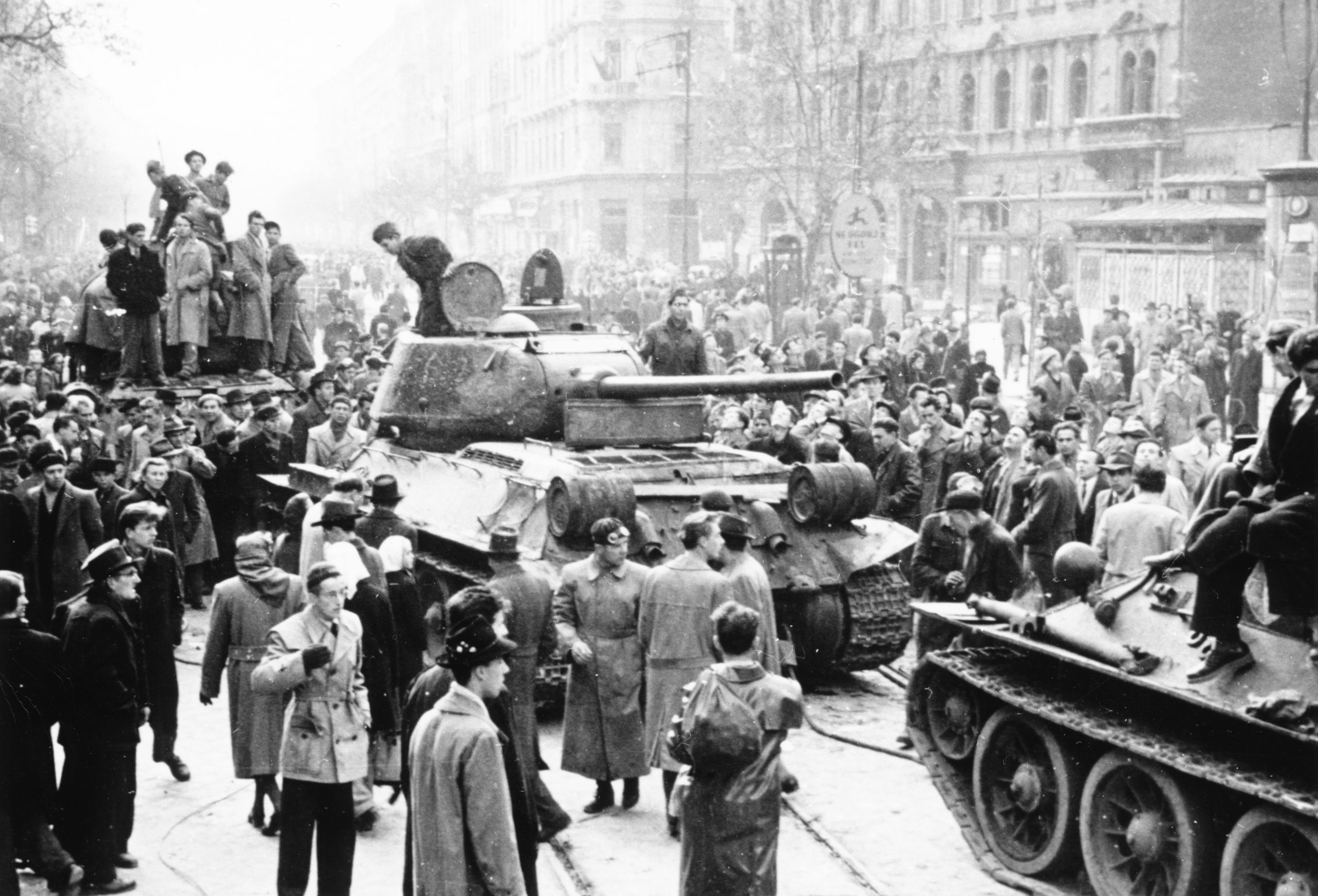
The powerful melody of Beethoven intertwined with the events of the revolution, from the night at the Parliament, to the siege of the radio building and to the point when Imre Nagy announced at noon on October 24 that those who would immediately lay down their weapons would receive amnesty.Continue reading
He also reflected on the suppression of the Hungarian revolution, and as a former communist, his opinion surely had impact on many leftists of the West. He had already been one of the few who sided with the revolution. In a piece he wrote on the first anniversary of the revolution, “The Blood of the Hungarians,” he remarked that “The blood of Hungary has re-emerged too precious to Europe and to freedom for us not to be jealous of it to the last drop. (…)
I am not one of those who think that there can be a compromise, even one made with resignation, even provisional, with a regime of terror which has as much right to call itself socialist as the executioners of the Inquisition had to call themselves Christians.
(…) Hungary conquered and in chains has done more for freedom and justice than any people for twenty years. But for this lesson to get through and convince those in the West who shut their eyes and ears, it was necessary, and it can be no comfort to us, for the people of Hungary to shed so much blood which is already drying in our memories. In Europe’s isolation today, we have only one way of being true to Hungary, and that is never to betray, among ourselves and everywhere, what the Hungarian heroes died for, never to condone, among ourselves and everywhere, even indirectly, those who killed them.”
Camus also thought that “János Kádár’s regime, and by implication, its Soviet sponsors, represented the real counter-revolution,” and not Imre Nagy’s government.
Jean-Paul Sartre
There is no better example than the French philosopher, playwright, novelist, screenwriter, political activist, biographer, and literary critic, who was unsettled by events in Hungary and changed his mind exactly because of that. Before his opinion changed, he embraced Marxism but did not join the Communist Party. Sartre believed that the Soviet Union was a “revolutionary” state working for the betterment of humanity and in the moral superiority of the Eastern Bloc in spite of its human rights violations. He opposed any criticism of the Soviet Union. Even in the wake of 1956, Sartre maintained his “pro-Soviet political stance,” so much so that when the Hungarian-born French author, journalist, critic, and political scientist, Ferenc Fejtő, gave him books to open up his mind about the communist system, he found the books unopened upon his next visit to Sartre.
Related article
"I Opposed Bolsheviks from The First Moment I Had the Chance," Interview with Former US Air Force Doctor László Varjú
Well before the 1956 Hungarian Revolution, László Varjú, as a high school student, was jailed for anti-communist activities. Then, in 1957 he risked his life to leave the country, later joining a lesser-known Hungarian paramilitary organization in the US.Continue reading
Then came the Hungarian Revolution. Congdon says that Sartre “was highly critical of the Soviet leaders’ handling of the uprising. He started to question the nature of Marxism and the legacy of the Russian Revolution. According to the philosopher, “what drove the population to despair was the explosive mixture, within the Party itself, of a still aggressive Stalinism and supporters of de-Stalinization; it was the hesitations, the about-faces, the procrastination, and the contradictions.” Following the Liberation, the French Communist Party (PCF) was infuriated by his philosophy, even though he always sympathized with the Left, and supported the PCF until 1956. The reason behind the party’s infuriation was that Sartre’s philosophy appeared to lure the French youth away from the ideology of communism and into Sartre’s own existentialism. In the late 1960s, he supported the Maoists, a movement that rejected the authority of established communist parties. However, despite aligning with the Maoists, Sartre said after the May events: “If one rereads all my books, one will realize that I have not changed profoundly and that I have always remained an anarchist.”
Raymond Aron
Aron was a French philosopher, sociologist, political scientist, and journalist. He is best known for his 1955 book The Opium of the Intellectuals, the title of which inverts Karl Marx’s claim that religion was the opium of the people; he argues that Marxism was the opium of the intellectuals in post-war France. As Congdon puts it, Aron “turned Marx’s taunt against Marxists.” Aron chastised French intellectuals for what he described as their harsh criticism of capitalism and democracy and their simultaneous defense of Marxist oppression, atrocities, and intolerance.
In his essay, The Meaning of Destiny, he laid special emphasis upon the emergence of several political parties during Hungary’s revolutionary days. “Aron insisted that a multiparty system was a prerequisite for responsible government,” Congdon notes. He was a friend of Sartre’s but he was also his critic. Aron said that “de-Stalinazition is not enough; what is needed is the removal of the conditions in which Stalinism could develop and, most of all, the removal of the pseudo-dictatorship of the proletariat: the single-party despotism.”
Related article
Professor E. Sylvester Vizi: “The Hungarian Revolution of 1956 was the most European moment in recent history”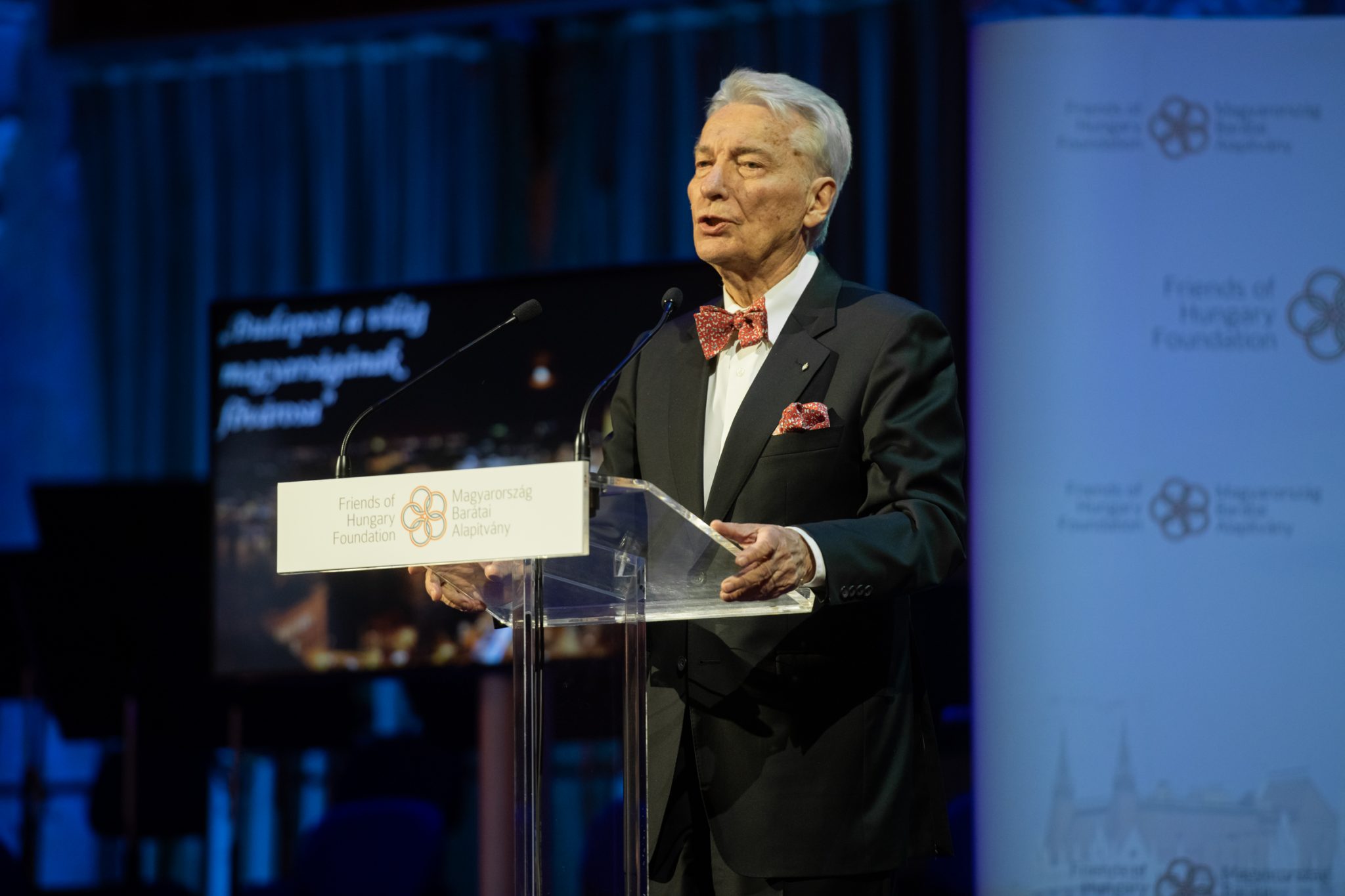
"The many thousands of deaths of the Hungarian Revolution and the people condemned to death and executed after the Revolution was the moral Stalingrad of world Bolshevism."Continue reading
Hannah Arendt
Arendt was a German-born American political theorist. Congdon says that she always had “antipathy for Marx’s dictatorial prescriptions, presupposing as they did highly centralized governments.” She denounced the dictatorship of Lenin as well. Arendt thought that “without general elections, without unrestricted freedom of press and assembly, without a free struggle of opinion, life dies out in every public institution, becomes a mere semblance of life, in which only the bureaucracy remains as the active element.”
According to Arendt, the Hungarian Revolution, “from its very beginning produced the council system anew in Budapest.” She also believed that in Hungary, “the rise of the councils, not the restoration of parties, was the clear sign of a true upsurge of democracy against dictatorship, of freedom against tyranny.”
But she was not only familiar with the Hungarian Revolution. Her book, On Revolution (1963), presents a comparison of the American and French Revolutions. In another one of her books, The Origins of Totalitarianism (1951), she writes: “the ideal subject of totalitarian rule is not the convinced Nazi or the convinced Communist, but people for whom the distinction between fact and fiction (i.e., the reality of experience) and the distinction between true and false (i.e., the standards of thought) no longer exist.”
Cornelius Castoriadis
Similar to Arendt, Castoriadis, a Greek-French philosopher, social critic, economist, and psychoanalyst, “despised bureaucratization, particularly that which infected revolutionary governments,” writes Congdon.
His first active involvement in politics occurred when he joined the Athenian Communist Youth in 1937, a section of the Young Communist League of Greece. In 1941 he joined the Communist Party of Greece (KKE), only to leave one year later in order to become an active Trotskyist. The latter action resulted in his persecution by both the Germans and the Communist Party. Once in Paris, Castoriadis joined the Trotskyist Parti Communiste Internationaliste (PCI). Castoriadis was particularly influential in the turn of the intellectual left during the 1950s against the Soviet Union, because he argued that the Soviet Union was not a communist but rather a bureaucratic capitalist state.
Related article
1956: Escape from Oppression in Hungary to Freedom in the West
During and after the period of the suppression of the Hungarian Revolution in 1956, about 200,000 people left the country for the West.Continue reading
Castoriadis eventually came to reject the Marxist theories of economics and of history, especially in an essay titled “Modern Capitalism and Revolution.” Castoriadis thought the Hungarian Revolution was “the first and, up to now, the only total revolution against total bureaucratic capitalism,” a system that in “its purest, most extreme form has been realized in Russia, China, and the other countries presently masquerading as socialist.” However, according to Congdon, “Castoriadis was incensed by the Left’s ideological blindness and cowardly reluctance to explore the full implications of the Hungarian Revolution because he believed that it provided a new political point of departure, a new source, for strategies of renewal in the modern world.”
Claude Lefort
To talk about Claude Lefort, another French philosopher and activist, we need to talk about Castoriadis some more as well.
Castoriadis and Lefort were both members of the PCI. In 1948, they experienced their “final disenchantment with Trotskyism,” leading them to break away to found the libertarian socialist and council communist group and journal Socialisme ou Barbarie, which profoundly influenced the French intellectual left.
Fact
Socialisme ou Barbarie (French for “Socialism or Barbarism”) was a French-based radical libertarian socialist group of the post-World War II period. It existed from 1948 until 1967. The animating personality was Cornelius Castoriadis. Socialisme ou Barbarie (S. ou B.) was also the name of the group’s journal.
Nicolas Poirier writes in his journal Overcoming or accepting social division: Castoriadis, Lefort and the Hungarian Revolution (2019) that “for the members of the group, the Hungarian revolution of 1956 constituted an event of major importance, as it attested to the possibility that a mass political movement could weaken the foundations of bureaucratic domination.”
Related article
The 1956 Uprising in Color - Photo Gallery!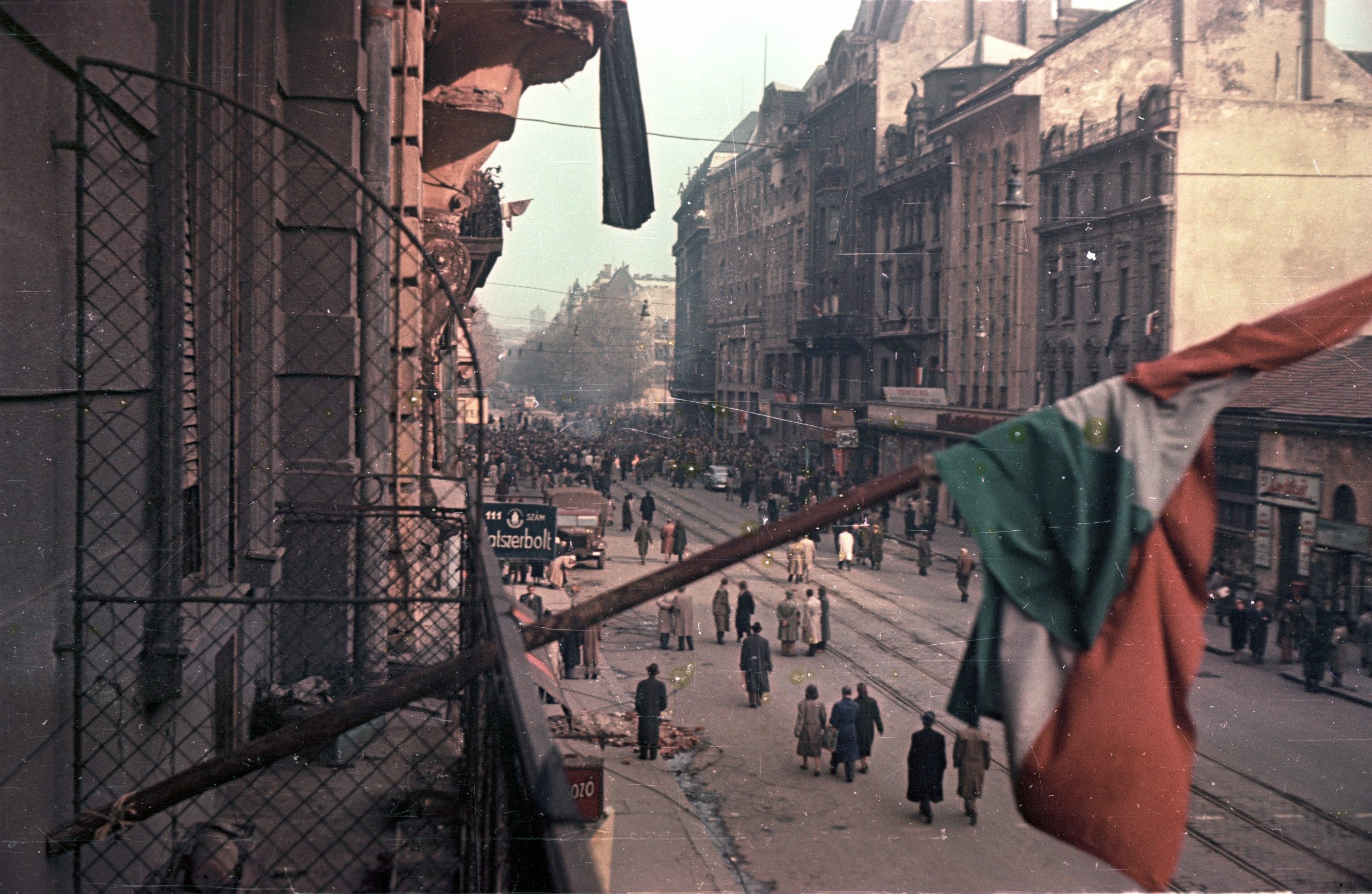
On the 23rd of October in 1956, Hungarian students and young workers staged a peaceful demonstration in Budapest to protest against the ruthless Communist dictatorship forced onto the country by the Soviet Union at the end of the Second World War. The protesters drew up a list of sixteen demands aimed at changing the hopeless […]Continue reading
Poirier says that “issues 20 and 21 of the journal were devoted mainly to the protest movements that took place in 1956, both in Hungary and Poland, against the bureaucratic power structure.” Castoriadis and Lefort had published two important articles in issue 20: “The Proletarian Revolution against the Bureaucracy,” in which Castoriadis harks back to the Hungarian events, developing a more general analysis of the situation in the Eastern bloc, and positively assessing the potential for resistance and struggle demonstrated by the Hungarian, Polish, and East German workers against the bureaucratic powers, and “The Hungarian Insurrection,” in which Lefort sought shortly after the events, to bring out “the truth about twelve days of struggle.”
But it seems that the Hungarian situation was not a forgettable one for them, since according to Poirier, “twenty years later, Castoriadis and Lefort revisited the Hungarian revolution in the first issue of the journal Libre, publishing two articles, “The Hungarian Source,” and “Une autre révolution” (“Another Revolution”), respectively. While reusing the bulk of the analyses they developed twenty years earlier, in these texts the authors contextualize the Hungarian revolution within the larger context of the struggles for democracy that have emerged over the past two centuries.
James A. Michener
The Pulitzer Prize-winning American author should be mentioned because of his book The Bridge at Andau (1957) chronicling the Hungarian Revolution of 1956. Living in Austria in the 1950s, Michener was at the border of Austria and Hungary during the period in which a significant wave of refugees fled the country. He concluded long interviews with many Hungarians who were fleeing their homeland.
Fact
While the book describes a historical event
based upon interviews with eyewitnesses, the story is told largely through composite characters or characters based on real people whose names were changed, either for their safety or the safety of family left behind. The story examines the experience of different segments of Hungarian society, both before and during the uprising, such as students, workers, soldiers, secret police, and ordinary citizens. The book takes the reader to the streets of Budapest, where unarmed young people, factory workers, and poorly equipped Hungarian soldiers fought Soviet tanks. It also tells the story of the few days of freedom enjoyed by the citizens of Budapest before the Soviets returned in force.
Written soon after the events it chronicles, and published during the ongoing general strike that started soon after Soviet reoccupation, the book gives the reader an idea of the middle years of the Cold War. Michener also “hoped to show how workers in so-called ‘worker states’ actually lived, and how, in their vast majority, they had turned against governments that claimed to rule in their name,” Congdon writes.
The title of the book refers to an actual bridge on the Austrian-Hungarian border near the village of Andau. The bridge was destroyed in November 1956 by Soviet troops and rebuilt in 1996.
Michener wrote in the foreword of his book that he was “absolutely convinced that the yearning for freedom which motivated Hungarians will operate elsewhere within the Soviet orbit with results that we cannot foresee.”
An excerpt of The Bridge at Andau can be read here.
Related article
“I do not hold hatred toward anyone over the fact that I was wrongfully imprisoned in 1956”
The Deputy Head of Service for the Rákoscsaba National Guard, István Válóczy, was sentenced to life in prison over false charges following a November 4 firefight in 1956.Continue reading
Giorgio Napolitano
Giorgio Napolitano is an Italian politician who served as the 11th president of Italy from 2006 to 2015. Napolitano was a longtime member of the Italian Communist Party (and of its post-Communist social-democratic successors, from the Democratic Party of the Left onwards).
Following the end of the war in 1945, he joined the Communist Party. When the Hungarian Revolution of 1956 happened, the leadership of the Italian Communist Party labeled the insurgents as counter-revolutionaries, and the official party newspaper L’Unità referred to them as “thugs” and “despicable agents provocateurs.” Napolitano complied with the party-sponsored position on this matter, a choice he would repeatedly declare to have become uncomfortable with. Later, he became a leading member of the party. After the dissolution of the Italian Communist Party in February 1991, Napolitano followed most of the members into the Democratic Party of the Left, a democratic socialist and social democratic party considered the post-communist evolution of the PCI.
Fact
The decision to support the USSR against the Hungarian revolutionaries
generated a split in the Italian Communist Party (PCI), and even the Italian General Confederation of Labor (or CGIL, Italy’s largest trade union, then supportive of the PCI) refused to conform to the party-sponsored position and applauded the revolution, on the basis that the eighth national congress of the Italian Communist Party had indeed stated that the “Italian way to socialism” was to be democratic and specific to the nation.
Taking a big leap in time, when Napolitano became president in 2006, his past resurfaced in the media. The right-wing daily Libero called on the Italian head of state to apologize to the Hungarian revolutionaries, recalling that Napolitano had approved the arrival of Soviet tanks in ’56 as a communist. When this happened, he was then preparing for a visit to Budapest and stressed again, via L’Unita, that he had since revised his views on ’56, and for the first time the politician had said that not only he, but also the Italian Communist Party had been wrong: “the comrades who tore up their party membership books after ’56 were right. The Italian socialists who broke with communism after the suppression of the Hungarian revolution were right,” he said.
Related article
The “Bear” who dodged bullets, but luck found him – the life of 1956 emigrant and patriot József Komlóssy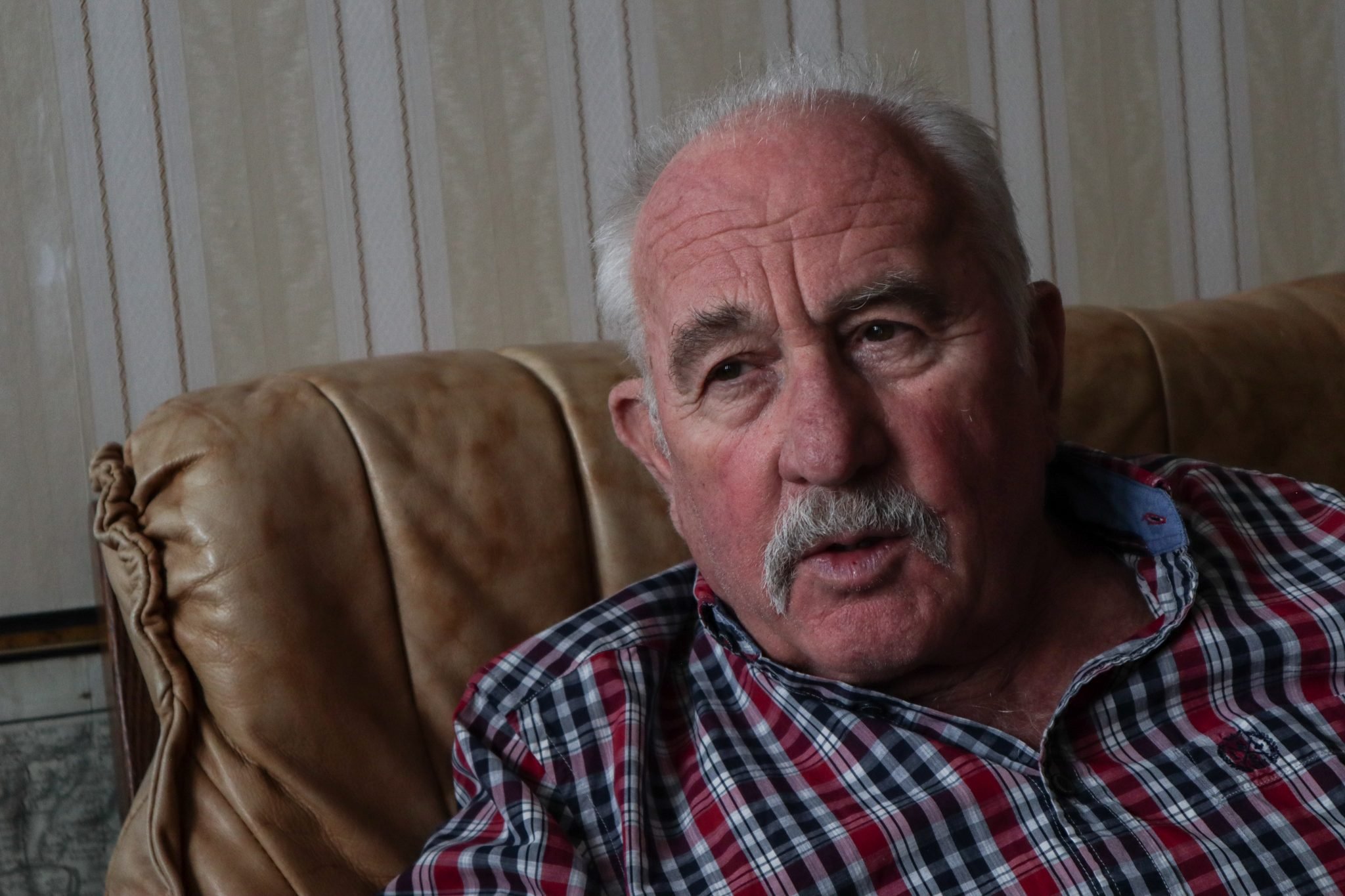
József Komlóssy dedicated himself to serving the global Hungarian cause after his trip through Transylvania in the early 60s. Above all else, he strove to support the rights and interests of those Hungarian minorities within the Carpathian Basin.Continue reading
The list of “exceptions” could go on with some others who changed their mind or sensed that the communist system could not work in the long run. For example, French author and winner of the Nobel Prize in Literature, André Gide, indicated his repudiation of communism after his 1936 journey to the USSR, or British political activist and historian, Robert Seton-Watson, who was saddened by the Soviet control of countries to whose independence he had devoted much of his life. However, none of them lived long enough to see the Hungarian Revolution in 1956. There are exceptions among non-Westerners too such as Milovan Djilas who started as a committed communist, but the Yugoslav politician, theorist, and author realized that the revolution in Hungary meant “the beginning of the end of Communism generally.”
Featured image via Fortepan/Róbert Hofbauer







